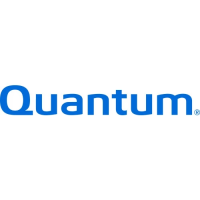Section 5
SCSI Programming Guidelines
5.2.3.4
Single Initiator Option
Initiators that do not implement the RESELECTION phase and do not operate in the multiple initiator
environment may set only the target's
SCSI ID bit and not their own SCSI ID bit during the
SELECTION phase. This makes it impossible for the target to detennine the initiator's SCSI ID.
5.2.3.5
Selection Timeout procedure
Two selection timeout procedures are specified for clearing the SCSI bus
if
the initiator waits a minimum
of
a selection timeout delay and there has been no BSY response from the ProDrive:
1)
Optionally, the initiator may assert the RST sigDal. (See Section 5.3.2.)
2)
Optionally, the initiator may continue asserting SEL and release the DATA BUS.
If
the
initiator has not detected
BSY
to
be
true after at least a selection abort time plus two deskew
delays, the initiator shall release
SEL, allowing the SCSI bus to go to the BUS FREE phase.
The ProDrive will only respond to a selection
if
the selection was still valid within a selection
time
of
its assertion
of
BSY. This ensures that an improper selection does not result (two
targets connected to the same initiator, wrong target connected to an initiator, or a target
connected to no initiator).
5.2.4
RESELECTION PHASE
The RESELECTION phase allows a target to reconnect to an initiator to continue some operation that was
previously started by the initiator but was suspended by the target (i.e., the target disconnected by allowing
a
BUS FREE phase to occur before the operation was complete).
5.2.4.1
Reselection
RES ELECTION can only be used in systems that implement the ARBITRATION phase.
Following the ARBITRATION phase, the winning
SCSI device has both
BSY
and SEL asserted and has
delayed at least a bus clear delay plus a bus settle delay. The ProDrive becomes a target by asserting the
I/O signal. It will also set the DATA BUS to a value that is the OR
of
its SCSI ID bit and the initiator's
SCSI ID bit. The ProDrive will wait at least two deskew delays and release BSY, then will wait at least
a bus settle delay before looking for a response from the initiator.
The initiator will determine that it is reselected when
SEL, 110, and its
SCSIID
bit are true and
BSY
is
false for at least a bus settle delay. The reselected initiator may examine the DATA
BUS to determine the
SCSI ID
of
the reselecting target. It must then assert BSY within a selection abort time
of
its most recent
detection
of
being reselected; this is required for correct operation
of
the timeout procedure.
If
parity is
implemented, the initiator must not respond to a
RESELECTION
ifbad
parity is detected. Also, it should
not respond to a
RESELECTION
if
more than two SCSI ID bits are on the DATA BUS.
After the ProDrive detects BSY, it will also assert
BSY
and wait at least two deskew delays, then release
SEL. It may then change the 110 signal and the DATA BUS. After the reselected initiator detects SEL
false, it must release BSY. The ProDrive will continue asserting BSY until it is ready to relinquish the
SCSI bus.
5.2.4.2 Reselection Timeout procedure
A RESELEC110N timeout procedure is specified for clearing the SCSI bus during a RESELECfION
phase
if
the target waits for a minimum
of
a selection timeout period and there has been no BSY response
from the initiator:
The ProDrive will continue asserting
SEL and I/O and will release all DATA BUS signals.
If
it does not
detect
BSY
to be true after at least a selection abort time plus two deskew delays. it will release SEL and
I/O,
allowing the SCSI bus to go
to
the BUS FREE phase. When responding to RESELECTION, the
SCSI
Programming
Guidelines
5·3

